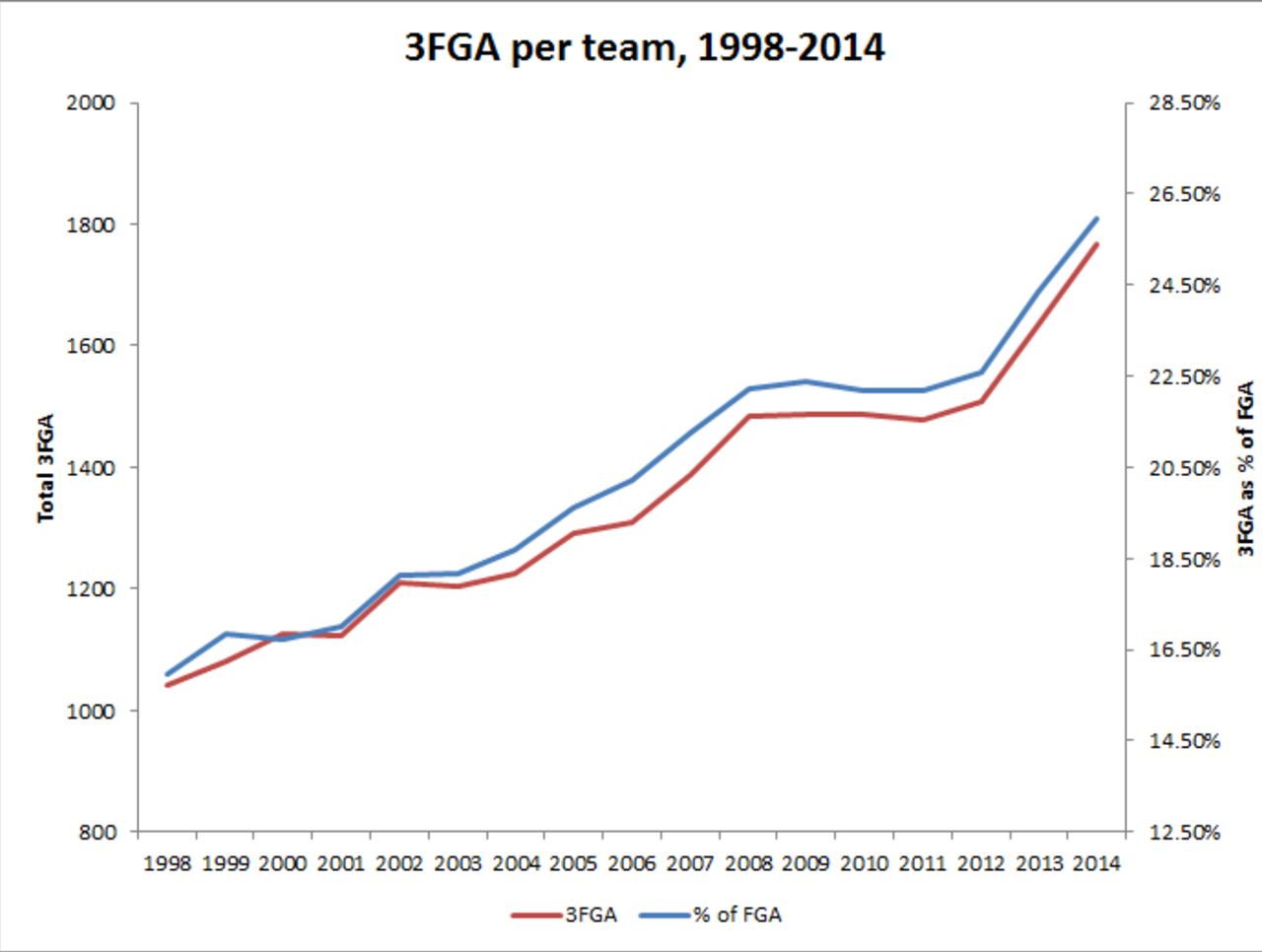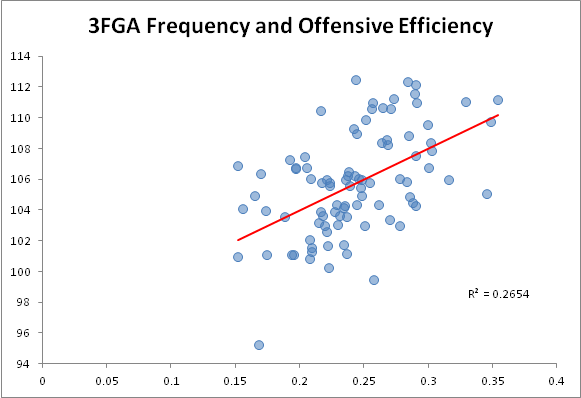A strategy that won't work: Byron Scott wants the Lakers to shoot only 10-15 threes a game
The change behind the bench from Mike D'Antoni to Byron Scott is a major one for the Los Angeles Lakers, and from personnel to fans, it's going to take some getting used to.
The most obvious change is one of pace. D'Antoni is famous for the Seven Seconds or Less approach he employed with the Phoenix Suns, with his teams generally playing at one of the league's highest - and most entertaining - tempos. Scott has proven a far more deliberate offensive coach:

On Tuesday, Scott discussed a part of his approach for the 2014-15 Lakers that will stand in stark contrast to the past two installments: the Lakers won't be 3-point bombers.
"Our game plan is really to get to that basket," Scott said. "I like the fact that we only shot 10 threes. If we shoot between 10 and 15, I think that's a good mixture of getting to that basket and shooting threes. I don't want us to be coming down, forcing up a bunch of threes. I really want us to attack the basket."
On the surface, the attack-versus-shoot mentality makes sense, but the degree to which Scott is talking about changing the style of play is extreme. The Lakers attempted 24.8 threes per game last season, and 24.6 the season before that. Scott is talking about cutting those attempts in half, while the league-wide usage of the longball is steadily increasing:

Attacking the basket is a great goal for an offense, but decrying the triple in favor of shots at the rim ignores the realities of offensive basketball. Namely, that part of the value of attacking is to open up shooters, and part of the value of strong shooting is to space a defense and allow for easier penetration. Aggression and 3-point shooting are inextricably linked, and while a team can succeed at one and not the other, each becomes easier with the strength of the other.
The relationship between drives and catch-and-shoot 3-point percentage isn't strong statistically, but in application terms it's striking: a team's willingness to drive explains 19.1 percent of the variance in a team's catch-and-shoot 3-point effectiveness.
Looking at things that way, Scott's take makes sense: they'll drive more, and the threes they take will be better ones. Again, in terms of what strong penetration can do to a defense, this makes tactical sense.
But the degree he's talking is too far. There is likely some inflection point at which the threat of 3-point shooting helps open up drives. In the aggregate, a team's 3-point shooting frequency explains 22.5 percent of the variance in their points per drive.
One hand washes the other - taking threes has an appreciable impact on drive efficacy, and drive frequency has an appreciable impact on 3-point efficacy. It's of little surprise, then, that 3-pointers are crucial to the success of an offense.
The table below shows the R-squared of a handful of statistics with a team's Offensive Rating, which is simply the number of points they score per-100 possessions (thus controlling for pace of play). An R-squared of 30.5 means that 30.5 percent of the variance in offensive efficiency can be explained by a team's 3-point percentage:
| R-squared | O-Rating |
|---|---|
| 3FG% | 30.5 |
| 3FGA/GM | 25.9 |
| 3FGA/FGA | 26.5 |
| Pace | 5.4 |
Over the past three seasons, the higher a percentage of a team's field goal attempts come from long range, the better the offense:

In those three seasons, only nine teams have shot fewer than the 15 threes a game Scott set as an upper limit. None have shot fewer than 11.7. Those nine teams had an average offensive efficiency of just 102.7, well below the 105.7 mark for the entire sample.
The only two offenses to perform better than average on offense with so few threes were the 2013-14 Memphis Grizzlies, who happen to have Marc Gasol and Zach Randolph as interior scoring threats, and the 2011-12 Utah Jazz, who had Al Jefferson inside and Paul Millsap working his magic inside the arc.
Personnel can and should dictate strategy to a degree, but the Lakers aren't exactly flush with Jeffersons and Gasols. Their best post scorer is Carlos Boozer, unless you're very high on Julius Randle out of the gate, and outside of Kobe Bryant and Jeremy Lin, they're a little thin on players who can capably create when driving to the hoop. Xavier Henry and Nick Young are talented in that regard, but will begin the season injured, stressing the team's perimeter depth.
There's also Steve Nash, one of the best distributors of all time ... who also happens to be one of the best at creating 3-point shots for teammates and knocking them down himself.
Scott's comments may have just been him talking off the cuff. It was clear from the minute he was hired that the Lakers would be playing a slower brand of basketball, and with an aging roster that's probably the right call. What's not the right call, though, is intentionally de-emphasizing 3-point shots that not only help your offense function more efficiently but also foster the aggressive to-the-rim attack you hope to employ.
HEADLINES
- Giddey ties career-high with 5 triples to lead Bulls past Cavaliers
- Faulk scores only goal, Hofer makes 24 saves to help Blues blank Jets
- TNF bets: Seahawks host Rams for high-stakes NFC West clash
- Bears exploring potential stadium sites in Northwest Indiana
- Rookie Ward hopes to be involved in Titans' coaching search